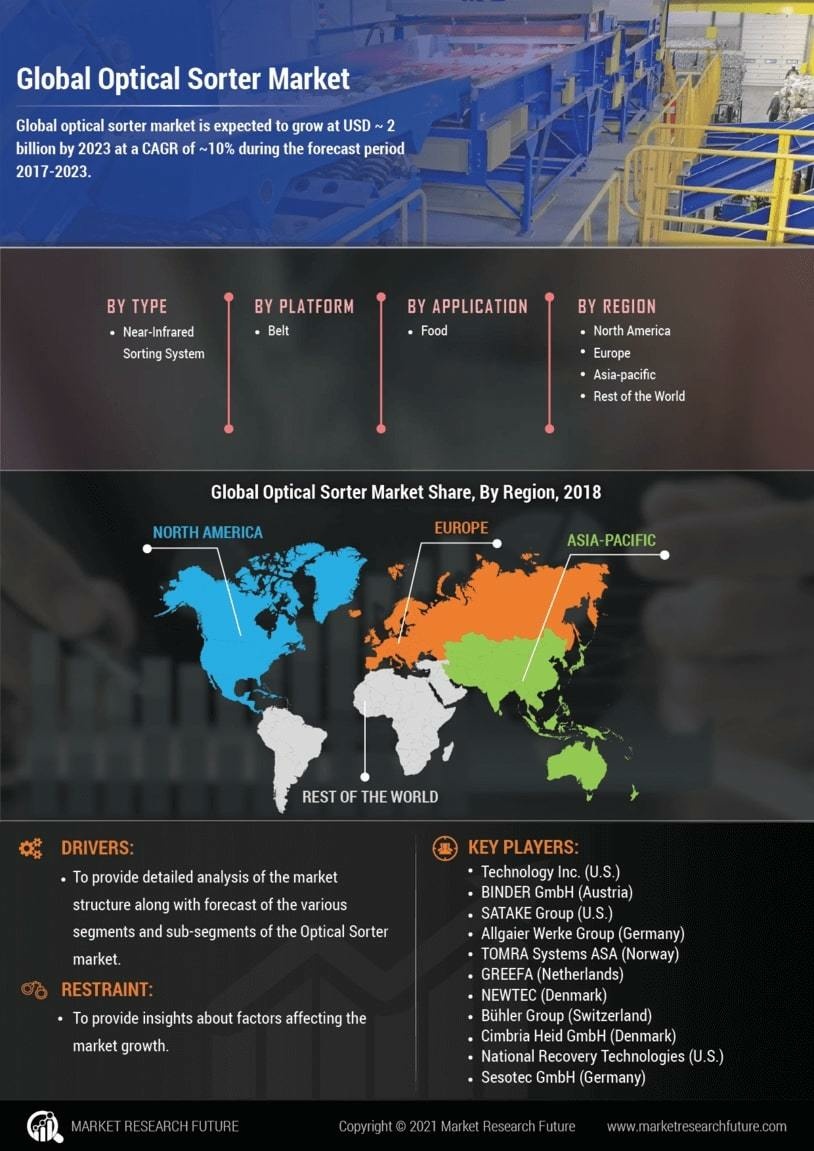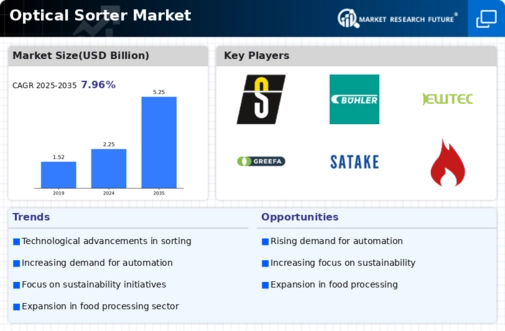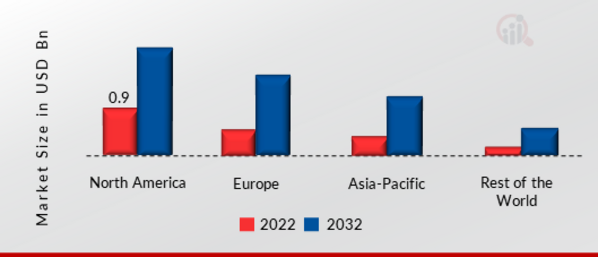Market Growth Projections
Sustainability Initiatives
The Global Optical Sorter Market Industry is witnessing a surge in sustainability initiatives, prompting organizations to adopt eco-friendly practices. Governments and regulatory bodies are increasingly advocating for waste reduction and resource conservation, which aligns with the capabilities of optical sorting technologies. For instance, recycling facilities utilize optical sorters to efficiently separate materials, thereby minimizing landfill waste and promoting recycling efforts. This alignment with sustainability goals not only enhances corporate social responsibility but also attracts environmentally conscious consumers. As a result, the market is likely to benefit from this trend, with organizations investing in optical sorting solutions to meet sustainability targets.
Technological Advancements
The Global Optical Sorter Market Industry is experiencing rapid technological advancements that enhance sorting efficiency and accuracy. Innovations such as artificial intelligence and machine learning are increasingly integrated into optical sorting systems, allowing for real-time data analysis and improved decision-making. For instance, advanced imaging technologies enable the identification of materials at a granular level, which is crucial for sectors like food processing and recycling. As a result, the market is projected to grow from 2.25 USD Billion in 2024 to 5.25 USD Billion by 2035, reflecting a compound annual growth rate (CAGR) of 8.0% from 2025 to 2035.
Expansion of Recycling Industry
The Global Optical Sorter Market Industry is bolstered by the expansion of the recycling industry, which increasingly adopts optical sorting technologies to improve material recovery rates. As global awareness of environmental issues rises, recycling facilities are investing in advanced optical sorters to efficiently separate recyclable materials from waste. For example, optical sorters can distinguish between different types of plastics, metals, and paper, thereby enhancing the efficiency of recycling processes. This trend is likely to continue, as municipalities and organizations strive to meet recycling targets and reduce landfill contributions, further propelling the growth of the optical sorter market.
Growth in Food Processing Sector
The Global Optical Sorter Market Industry is significantly influenced by the growth of the food processing sector, which increasingly relies on optical sorting technologies to enhance operational efficiency. As consumer preferences shift towards high-quality and safe food products, food processors are adopting optical sorters to ensure the removal of contaminants and defective items. This trend is particularly evident in the fruit and vegetable processing industry, where optical sorters are employed to maintain product quality. The expansion of the food processing sector is expected to drive the market, as businesses seek to leverage optical sorting solutions to meet consumer demands and regulatory requirements.
Rising Demand for Quality Control
In the Global Optical Sorter Market Industry, the increasing emphasis on quality control across various sectors drives the adoption of optical sorting technologies. Industries such as food and beverage, pharmaceuticals, and recycling are prioritizing quality assurance to meet regulatory standards and consumer expectations. For example, food processors utilize optical sorters to eliminate defective products, ensuring only high-quality items reach consumers. This focus on quality not only enhances brand reputation but also reduces waste, thereby improving operational efficiency. Consequently, the demand for optical sorters is expected to rise significantly, contributing to the overall market growth.








